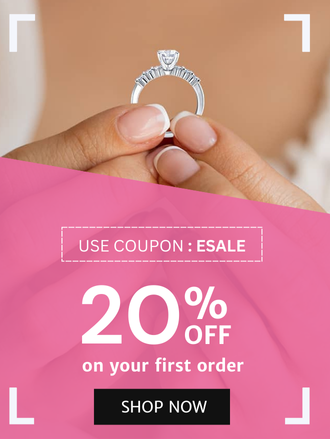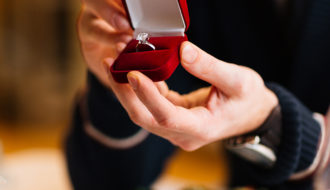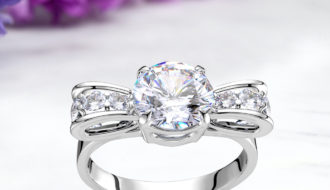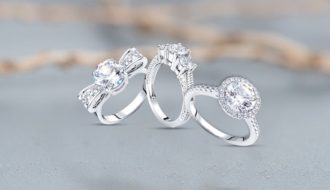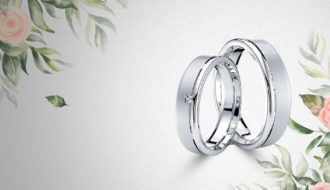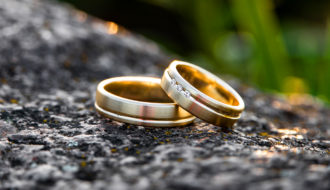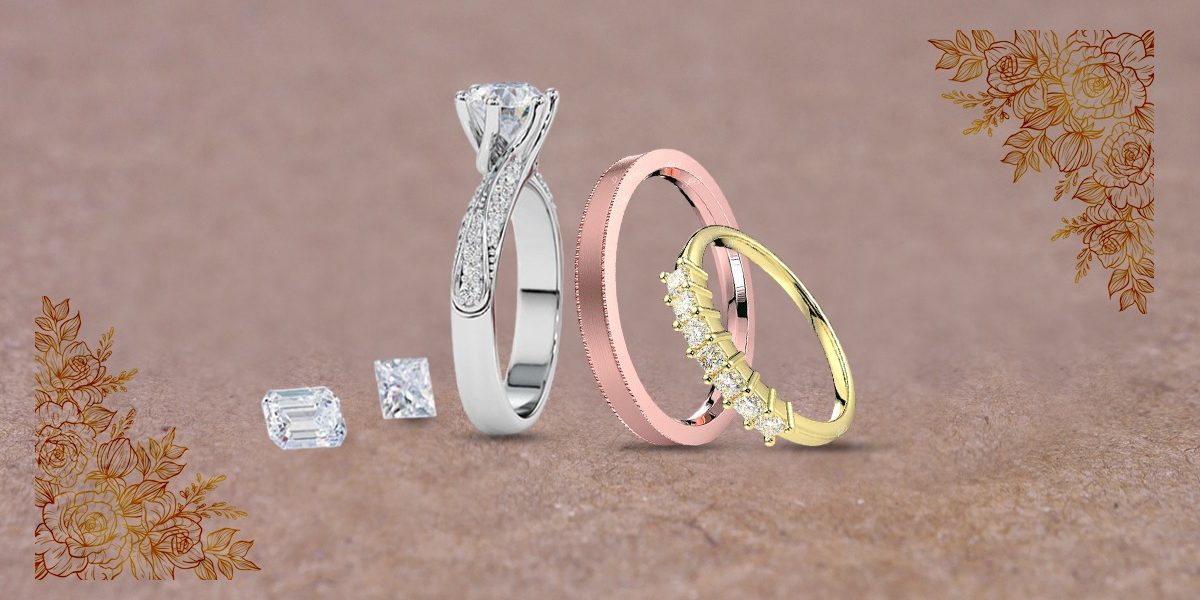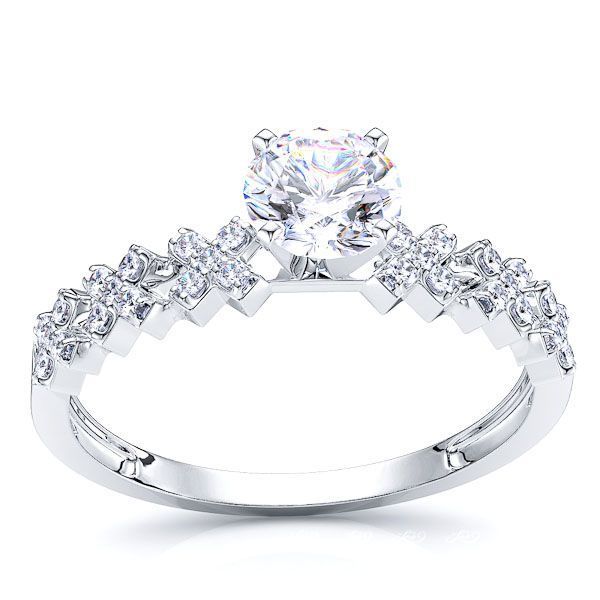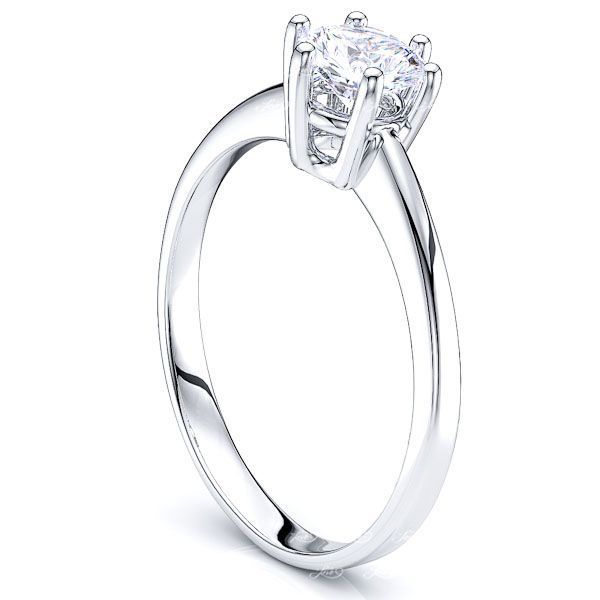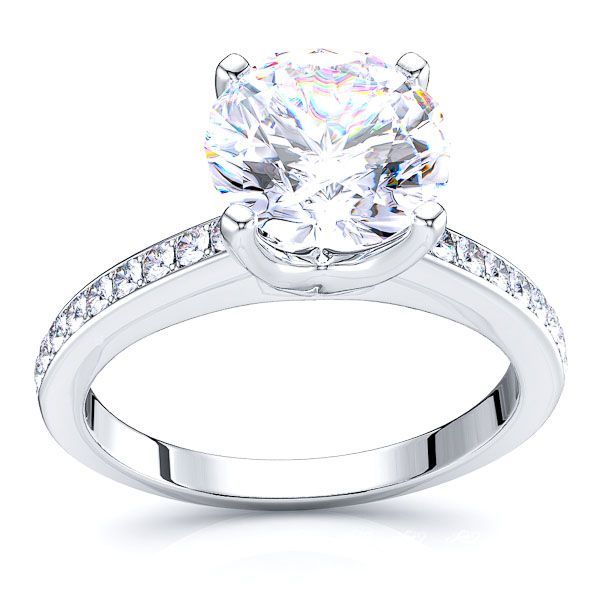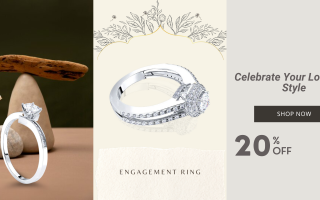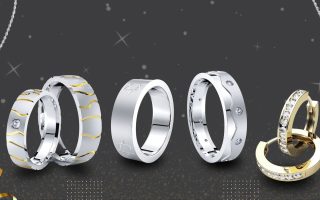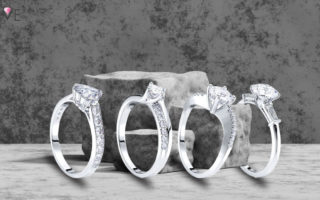For someone who is only beginning to consider getting down on one knee and popping the question, the world of engagement rings can be intimidating. The ring is the takeaway object, the item that will be flaunted and photographed as you and your partner reveal your happy news. With so many ring styles and jewelry stores to choose from, it can be difficult to know how and where to find the ideal engagement ring. After all, it’s one of the most significant purchases you’ll ever make, so you want to get it right. Not only because this purchase can be costly, but also because you want your partner to enjoy it as much as you do.
Don’t worry if you’re feeling a little nervous about beginning your quest for the perfect expression of your love and devotion. We understand how difficult it can be to choose the right ring, so we’ve put together this engagement ring buying guide with practical tips and what to look for when buying diamond rings to assist you in making the big purchase!
- Set a Budget
It is not essential to invest two months’ salary on the ring, contrary to common opinion. It was a marketing trick devised by De Beers in the 1930s, and it should have no bearing on your decision to purchase a ring. The average couple spent $7,829 on buying engagement rings in 2018, but you can get a nearly one-carat solitaire for as little as $1,500. What you buy can depend on how you prioritise your budget—whether it’s the stone’s consistency, the setting’s complexity, or add-ons like baguettes or engravings. If you can’t afford something flashy right now, go for a basic platinum or pavé band that offers room to grow. What matters most is that you spend what you can afford and get the best value for your money.
- Book an Appointment
Even though buying an engagement ring is a very personal decision, seeking a second opinion is strongly recommended. Majority of the leading jewelry stores offer consultation services for its customers at free of cost. You may book an appointment with them to collect more information and take an informed decision. A professional will walk you through the design and components of your perfect ring during a consultation, emphasising the importance of the 4Cs: cut, clarity, colour, and carat.
- Choosing the diamond
The 4Cs are the most important aspects of a diamond that you should remember before buying diamond engagement ring. When assessing the quality of a diamond, colour, cut, clarity, and carat are all important factors to consider. Each factor has an impact on the stone’s appearance, ensuring that you get the best stone for your money.
- Cut – It refers to the sparkle factor rather than the ring shape. The cuts are rated on a scale of excellent to mediocre. When a diamond is cut into a shape, such as a pear or an oval, it is done so that the facets interact with light to maximise bling.
- Carat – A diamond’s size or weight is measured in carats. An engagement ring’s total diamond weight is one carat, or 200 milligrams.
- Clarity – Even the most flawless stone may have defects, or inclusions, which are minute black or white flecks or lines that form naturally as diamonds form in the earth over millions of years. These minor flaws assess clarity, which is graded on a complex scale ranging from flawless to included. The higher the price, the smaller, less, and less noticeable the inclusions are.
- Colour – Diamonds come in a variety of colours, but colourless diamonds are the most valuable. Colour is graded on a scale of D to Z, with D being the most expensive and Z being visibly yellowish. So-called fancy colours, such as pink, purple, or chocolate, have recently gained popularity. The more saturated the pigment, the more valuable the stone is for those.
- Pick a Shape
The engagement ring you select should reflect your personal style. Here’s a quick rundown of the most popular shapes:
- Round: This is the most common shape because it better shows off a diamond’s brilliance.
- Oval: This shape is ideal for long, slender fingers.
- Emerald’s massive facets show off its exceptional clarity.
- Asscher: An art deco-inspired square emerald.
- Cushion: This retro design was common in the 1800s and is mostly square with rounded corners.
- Princess: A stone’s long, flat-topped, and pyramidal shape gives it the appearance of being larger than it is.
- Marquise: This long, tapered shape maximises the size of the carat.
- Pear: A loo that is a cross between a round and a marquise.
- Choosing the right metal
Since the ring will almost certainly be worn every day, it’s important to choose a metal that is both durable and attractive. Gold is a classic option that continues to be popular. In terms of colour, gold offers a variety of options for personalization. Rose gold is a common, modern option created by combining gold with copper and silver to create a more durable metal than yellow gold. Pure gold is mixed with white metals like palladium or silver to create white gold. It’s more stunning than yellow gold, and it’s much more robust. Palladium, a naturally durable and 95 percent pure white precious metal, is also a common option while buying engagement rings. Palladium is thirty times rarer than gold, and it tarnishes less easily.
- Selecting a Setting Style
The ring’s setting style is probably the most critical design decision when buying an engagement ring. A solitaire ring is one that has only one diamond in the middle. Smaller diamonds are inset into the metal on either side of a large diamond in a shoulder setting. One large stone is surrounded by smaller stones in the halo environment.
- Identify Her Ring Size
If the proposal is going to be a surprise, there are a number of options for determining her ring size. If she wears rings on a regular basis, get a ring sizer app and weigh the ring she wears the most. If the marriage was decided upon by both of you, as is the case with many proposals these days, actually asking her ring size is a good idea. Then you can either surprise her with the ring or go shopping together.
